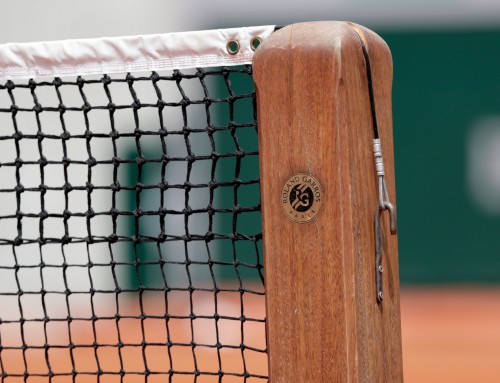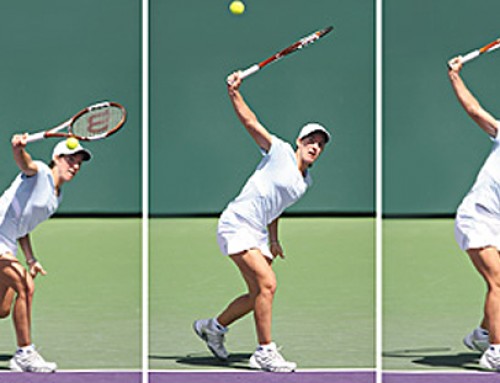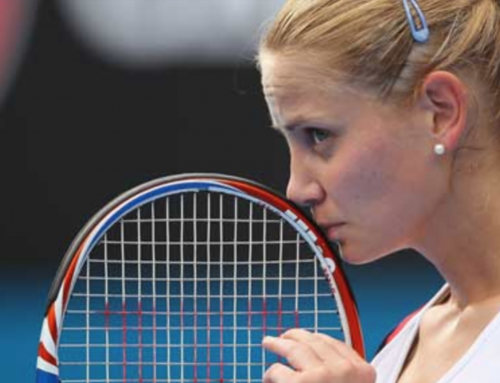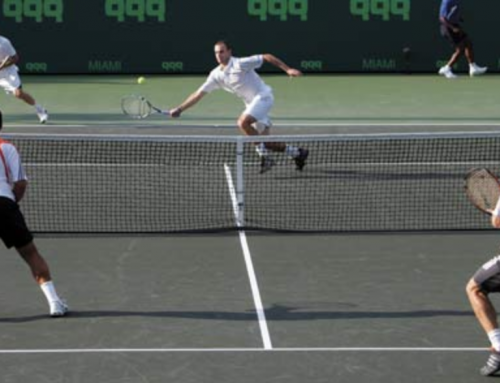 Greetings and welcome to the Essential Tennis Blog! Thanks very much for coming by and checking out this article. If you find it helpful, make sure to also check out the Essential Tennis Podcast which is also weekly updated with helpful tennis instruction. Simply click the link on the right side of the page.
Greetings and welcome to the Essential Tennis Blog! Thanks very much for coming by and checking out this article. If you find it helpful, make sure to also check out the Essential Tennis Podcast which is also weekly updated with helpful tennis instruction. Simply click the link on the right side of the page.
This week’s article is about why you need to be at the net as much as possible in your doubles play. In lower level and intermediate team practices that I teach there seems to be a constant debate over whether coming to the net all the time is good or not. A large amount of players at the 2.0-4.0 level feel its better court coverage to have one player stay back. Well, I’m here to tell you that if you ever want to move up in level (rather than moving up within your level) coming to the net is not only good, its necessary. Below are the main reasons why.
You want to hit down, not up.
Next time you’re on a tennis court go stand on the baseline and look over to the other side of the court. How much of the opponents court can you see while looking OVER the top of the net? The answer is none of it. What does that mean for your tennis? As long as you stay on the baseline you are going to have to hit the ball in an upwards direction in order to get it to your opponents side of the court. You can do this either by opening up the racket face, or hitting it more aggressively by closing the face more but swinging upwards to hit it over. In both cases you are lifting the ball upwards, which must happen in order to make your shot from the baseline. The closer and closer you get to the net the more of your opponents court becomes available for you to hit directly at, instead of hitting up. If you’re of average height and stand on the service line, now you can see some of the court over the top of the net in no-mans land on the other side. Take two or three more steps in, now you can see to around the service line on the other side. Take two more steps in, now most of the court is at your disposal to hit into.
Why is this important? If you stay at the baseline and hit up, and your opponents come to the net, they have the ability to hit down. That’s a problem. You’re now lifting the ball up to them, and they have the ability to hit down at you. If you were a volley ball player, what would you rather be doing, setting to your opponents or spiking? Hopefully I don’t have to answer that for you. The closer you are to the net the more potential you have to attack. Now you still need to have the technical skills to accomplish this, and so if your net game is not very good coming to the net will become quite frustrating. Does that mean the strategy is poor? No of course not, it means you have to get out and improve your technique.
Take time away from your opponents.
The closer you get to the net the less time your opponents have to react to your shot. This means a mediocre shot at the net can end up winning the point, where an outstanding shot would have been needed from the baseline to throw them off the same amount. Does it mean that it takes time away from yourself as well? Yes. Therefore make sure that you’re not running up and kissing the net after hitting a weak shot to your opponents. Hit a shot thats either low to their feet, or strong and with a lot of pace before committing to moving all the way in. Otherwise you could end up being a sitting duck.
Intimidate and pressure.
When both you and your partner move up to the net together your opponents will be pressured to hit a better quality shot. Had one of you stayed back, there would be an easy out to the baseliner, a way to neutralize the point and stay comfortable. With both players at the net ready to put the ball away a better quality shot must be hit by your opponents to avoid getting beat, this will make them uncomfortable and they will make more errors.
Proactive tennis, not passive.
Coming to the net puts matters into your own hands, you’re trying to take over and take care of business. This is exactly what your similarly skilled opponents don’t want. They want to stay in their comfort zone and not be pressured or rushed. Don’t let them feel comfortable! Its your job to make them as uneasy as possible, pressuring them as much as possible. Moving both players to the net as much as possible will do just that, don’t sit back and give them an easy way out to avoid hitting to a net player. Get in there and shut them down.
It’s what high level players do!
Period. This is the strategy of top level doubles players. Get to the net, get to the net often, and get to the net quickly. Are you happy and satisfied playing at the level you’re at right now? Something tells me that if you were you wouldn’t be reading this blog. If you or your partner are currently playing one up/one back moving you both to the net will improve your doubles. Will you get lobbed over and passed? Sure you will. Will it be every point? Of course not, if your net game is competent then the balls you put away and the mistakes your opponents make trying to hit a perfect lob or passing shot will far out weigh the great shots that they do end up hitting. If your volleys and overhead aren’t good enough to keep from making a lot of errors once you get up there then you need to get out and work on your technique!
Approaching the net is an art form, there are many skills and nuances that must be learned, so if you’re not used to being there every point don’t be discouraged if it doesn’t show immediate results. I plan on continuing to cover specific parts of it along the way. In the mean time if you have any questions about it feel free to let me know! You can always reach me at ian@essentialtennis.com. Take care, and enjoy your tennis.







